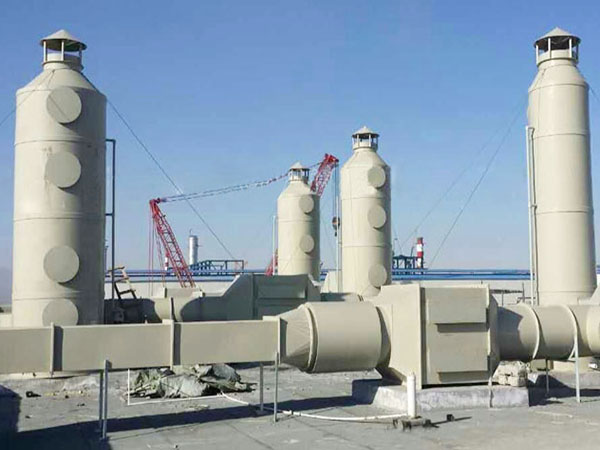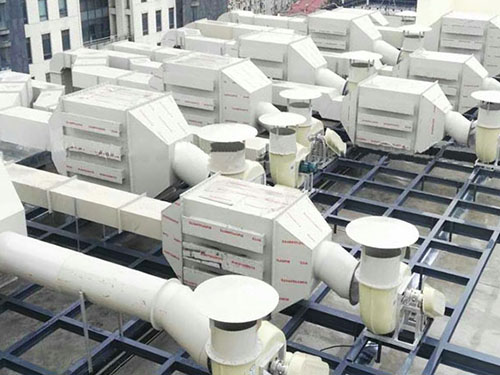Treatment of "three wastes" in the laboratory
Most of the waste gas, waste liquid and waste residue generated during the experiment are harmful and must be treated before discharge.
(1) Treatment of exhaust gas
A small amount of toxic gas can be discharged outside the air through the exhaust device and diluted by the air. When the amount of toxic gas is large, it must be treated and then discharged. Acid gases such as nitrogen oxides and sulfur dioxide are absorbed by an alkali solution. The flammable organic waste liquid can be completely burned by oxygen in the combustion furnace.
(2) Waste liquid treatment containing phenol, cyanide, mercury, chromium and arsenic
The low concentration phenol-containing waste liquid plus sodium hypochlorite or bleaching powder oxidizes the phenol to carbon dioxide and water. The high concentration phenol-containing wastewater is extracted with butyl acetate, and the phenol is recovered by double distillation.
The cyanide-containing waste liquid was adjusted to pH 10 or higher with a sodium hydroxide solution, and then 3% potassium permanganate was added to decompose CN-oxidation. The waste liquid having a high CN-content is treated by an alkaline chlorination method, that is, sodium hypochlorite is added at a pH of 10 or more to decompose CN-oxidation.
The waste liquid containing mercury salt is first adjusted to pH 8~10, excess sodium sulfide is added to form mercury sulfide precipitate, and then the coprecipitant ferrous sulfate is added, and the generated iron sulfide adsorbs and suspends the suspended mercury sulfide particles in the water. The supernatant is discharged, and the residue is recovered by calcination or re-formed into a mercury salt.
The chromic acid washing liquid is ineffective, concentrated and cooled, and then added with potassium permanganate powder for oxidation, and filtered by a sand core funnel to be used again. The waste washing liquid uses residual iron scraps to reduce residual Cr(IV) to Cr(III), and then neutralizes with waste alkali to form a low-toxic Cr(OH)3 precipitate.
The arsenic-containing waste liquid is added with calcium oxide, and the pH is adjusted to 8, and calcium arsenate and calcium arsenite precipitate are formed. Or adjust the pH above 10, add sodium sulfide and arsenic to form a refractory, low-toxic sulfide precipitate.
Lead and cadmium waste liquid, the pH is adjusted to 8~10 with slaked lime, Pb(OH)2 and Cd(OH)2 are precipitated by Pb2+ and Cd2+, and ferrous sulfate is added as coprecipitant.
(III) Recovery of organic solvents
The waste diethyl ether solution was placed in a separatory funnel, washed once with water, neutralized, washed with 0.5% potassium permanganate until the purple color did not fade, washed with water, and washed with 0.5% to 1% ammonium ferrous sulfate solution to remove peroxidation. The product was washed with water, dried with calcium chloride, filtered, fractionated, and collected as a fraction of 33.5 to 34.5 °C.
The ethyl acetate waste liquid is washed several times with water, then washed with a dilute solution of sodium thiosulfate several times to make it fade, then washed several times with water, distilled, dehydrated with anhydrous potassium carbonate, left for a few days, filtered and distilled. Collect 76~77 °C fractions.
The waste solution such as chloroform, ethanol or carbon tetrachloride can be treated by washing the waste liquid with the reagent, and finally the left and right boiling points are collected by distillation to obtain a reusable solvent. The method can be found on the relevant information.
(4) Waste destruction
The solid waste that appeared in the experiment could not be randomly placed to avoid accidents. Hazardous waste that emits toxic gases or is self-igniting cannot be thrown into the waste bin and discharged into the waste water pipeline. Waste chemicals that are insoluble in water are prohibited from being thrown into the waste water pipeline and must be burnt off in a suitable place or chemically treated to be harmless. Broken glass and other sharp and sharp scraps cannot be thrown into the trash and collected in special waste bins.

